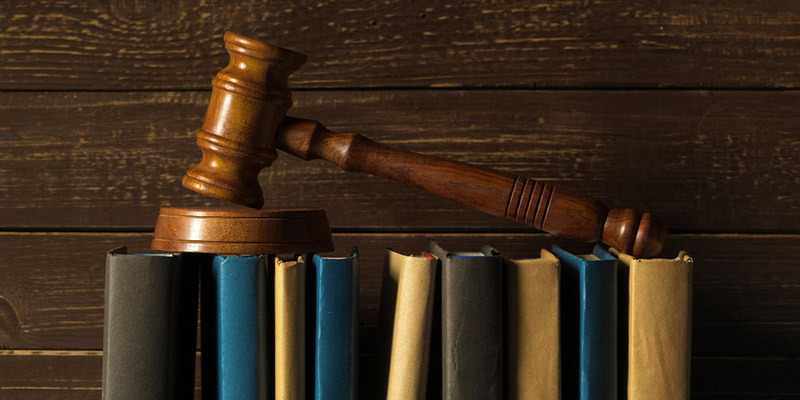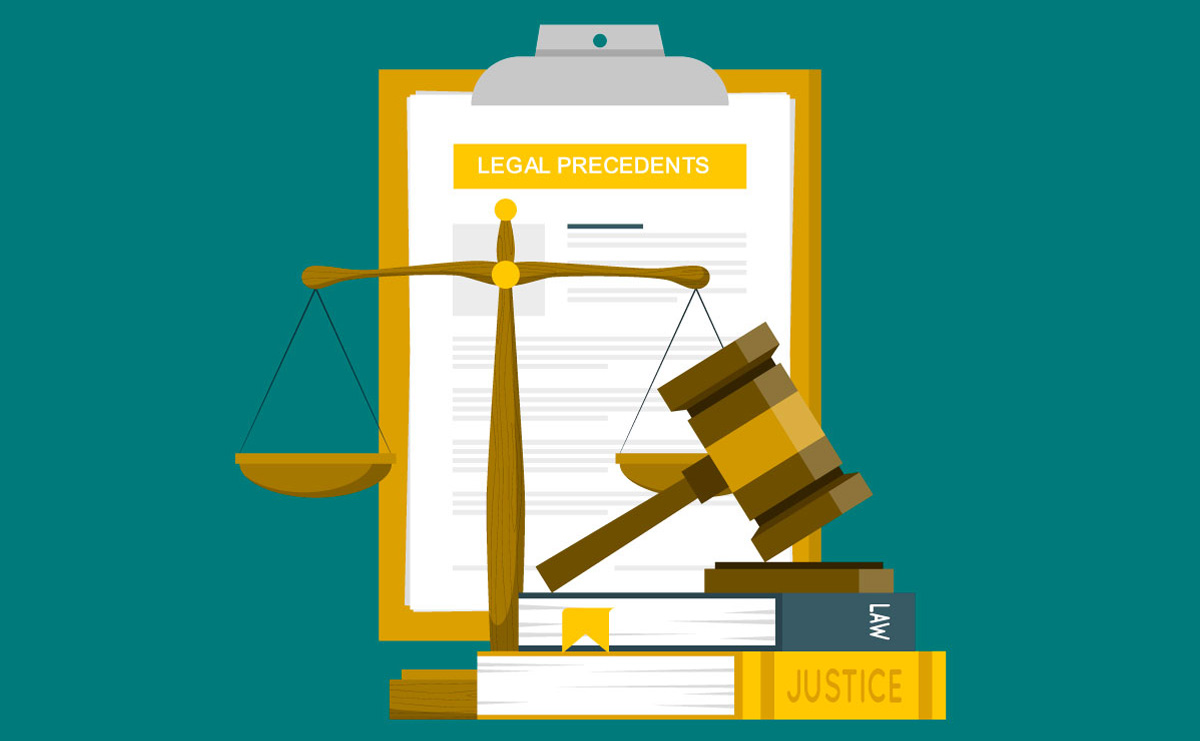Contents
What Every Lawyer Needs to Know About Legal Precedents and Case Law Resources
Legal precedents and case law are the foundation of common law systems, providing essential guidance for resolving disputes. For lawyers, understanding how precedents work and knowing where to find reliable case law resources is crucial for building strong arguments, staying compliant with the law, and offering sound advice to clients. Understanding the answer to “Why is legal precedent important to the courts?” reveals the critical role of consistency and predictability in upholding the rule of law. Precedent in law ensures consistency and predictability in judicial decisions. This guide covers everything you need to know about legal precedents and the resources available to help you navigate them effectively.
What Is a Legal Precedent?
A legal precedent is a principle or rule established in a previous legal case that is either binding on or persuasive for a court when deciding subsequent cases with similar issues or facts. Legal precedents are foundational to the common law legal system, ensuring consistency, predictability, and fairness in judicial decisions. Judges often rely on precedent in law to determine the outcome of cases with similar facts.
There are two primary types of legal precedents. The first is binding precedent, which comes from decisions made by higher courts in the same jurisdiction. Lower courts are obligated to follow these precedents unless they can distinguish the case at hand based on its facts or legal issues. This means that judges have the discretion to consider the unique aspects of a case and decide if the precedent should be followed. For example, a lower court must adhere to a supreme or appellate court ruling on the same legal matter, unless the judge finds a significant difference in the facts or legal issues of the current case.
The second type is persuasive precedent, which includes decisions from courts in other jurisdictions or lower courts within the same jurisdiction. While not obligatory, these precedents may influence a court’s decision if they are relevant or compelling. This broader legal context keeps the audience aware and engaged. For instance, a U.S. state court might consider rulings from courts in other states for guidance on a similar issue.
Several key concepts underpin the use of legal precedents. Stare decisis is the doctrine that courts should adhere to established precedents to maintain consistency and stability in the legal system. Ratio decidendi refers to the legal reasoning or principle underlying a court’s decision, which forms the binding precedent. In contrast, obiter dicta consists of additional observations made by a judge that are not essential to the decision. While not binding, obiter dicta can still serve as persuasive authority.
By relying on legal precedents, courts uphold the principles of consistency and efficiency while allowing flexibility to adapt to changing circumstances.
This process of judicial decision-making, guided by legal precedents, keeps the audience informed and engaged.

Why Is Legal Precedent Important to the Courts?
Legal precedent is vital to the courts for several reasons, as it is the foundation for consistency, predictability, and fairness in the legal system. Judges frequently ask themselves, “Why is legal precedent important to the courts?” when determining how prior rulings should influence their decisions. Here is why legal precedent is essential:
1. Consistency in Decision-Making
Legal precedent ensures that courts treat similar cases, promoting uniformity in applying the law. This consistency fosters trust in the judicial system, as people can expect predictable outcomes for similar legal issues.
2. Predictability for Individuals and Businesses
By following precedent, courts provide a stable legal framework that allows individuals, businesses, and governments to plan their actions with a reasonable understanding of how the law will be applied.
3. Efficiency in the Legal System
Precedents streamline the judicial process by providing a set of established principles that courts can rely on. This reduces the need to revisit, and debate settled legal questions in every case.
4. Guidance for Lower Courts
Precedents, particularly those set by higher courts, serve as binding authority for lower courts. This hierarchical system ensures that the law is applied uniformly across jurisdictions.
5. Development of the Law
Precedents contribute to the evolution of the legal system by allowing courts to adapt existing principles to new and changing circumstances. Through the doctrine of stare decisis (to stand by things decided), courts build on past decisions to refine and develop the law over time.
6. Judicial Accountability
The use of precedent holds judges accountable by requiring them to base their rulings on established legal principles rather than personal opinions or biases.
7. Fairness and Impartiality
Precedents reduce arbitrary decision-making by obligating judges to follow established legal standards. This ensures that the law is applied impartially and equitably.
8. Legitimacy of the Judicial System
A system that relies on precedent demonstrates respect for the rule of law, reinforcing the credibility and legitimacy of the courts.
By adhering to legal precedent, courts strike a delicate balance between the need for stability in the legal system and the flexibility to adapt to societal changes. This balance ensures that the legal system remains robust and relevant.
Understanding Case Law
Case law refers to the law created through judicial decisions rather than statutes or regulations. It is a fundamental component of the legal system in common law jurisdictions, such as the United States, Canada, the United Kingdom, and Australia.
I. Key Elements of Case Law
Case law is derived from judicial decisions made by judges in individual cases. These rulings interpret and apply existing laws to specific circumstances, shaping the legal landscape over time.
A cornerstone of case law is the principle of stare decisis, a Latin term meaning “to stand by things decided.” This doctrine ensures that courts are bound by precedents set by higher courts within the same jurisdiction. By adhering to these precedents, the legal system promotes consistency and predictability in the application of the law.
Case law also distinguishes between binding authority and persuasive authority. Binding authority refers to decisions from higher courts within the same jurisdiction that lower courts are obligated to follow. In contrast, persuasive authority includes decisions from courts in other jurisdictions or lower courts, which judges may consider but are not required to adopt.
Finally, case law is captured in published opinions. These written documents detail the court’s reasoning, the legal principles applied, and the case’s outcome. Published opinions are typically found in legal reporters, serving as a critical resource for legal research and reference.
II. Key Characteristics of Case Law
Case law, a key feature of our legal system, is primarily shaped by judges. They interpret statutes, clarify ambiguities, and develop legal principles as they resolve disputes. These judicial decisions can serve as binding precedent, which lower courts are obligated to follow, or persuasive precedent, which may influence but does not bind a judge’s decision. The binding authority of case law depends heavily on the hierarchy of courts, with decisions by higher appellate courts typically carrying more weight than those of lower courts.
Case law is not static, but dynamic and evolving. It allows the legal system to adapt to new societal challenges and emerging issues. It is also fact-specific, meaning that the individual case’s unique circumstances often shape the established principles. This adaptability ensures that case law remains relevant and responsive to society’s changing needs while maintaining legal certainty and predictability.
A significant aspect of case law is its interplay with statutory law. Judges often interpret or fill gaps in legislation, ensuring its practical application aligns with legislative intent. Written judgments, which outline the reasoning and legal principles behind judicial decisions, are critical to this process. These judgments, including the ratio decidendi—the binding legal principle necessary to decide the case—and obiter dicta, non-binding comments or observations made by the judge, provide a clear record of the case’s legal interpretation.
Despite its reliance on precedent, case law is not rigid. It allows room for legal development, ensuring that the law remains relevant and responsive. Higher courts can overrule outdated or incorrect decisions, while judges can distinguish a case from precedent if its facts differ significantly, thereby avoiding the application of the same legal principle. This balance between adherence to precedent and flexibility makes case law an essential component of a robust and adaptable legal system. It provides a framework that promotes fairness, consistency, and reliability while allowing for growth and modernization.
How to Analyze Legal Precedents
Understanding the context of a legal precedent is the cornerstone of effective analysis. It is crucial to start by identifying the court that decided the case, as decisions from higher courts carry more authority. Also, confirming that the precedent applies to the relevant jurisdiction and determining the type of case—criminal, civil, administrative, or constitutional—provides a solid background for the analysis.
After understanding the context, the next step is to meticulously read the case and extract key details. This involves summarizing the facts to gain a clear understanding of the context and reviewing the procedural history to trace the case’s journey through the legal system. It is crucial to identify the legal questions the court addressed, known as the issues, and to focus on the court’s holding or the final ruling on these questions. Paying close attention to the reasoning, which includes the laws, principles, and arguments the court relied upon to reach its decision, will ensure a thorough and diligent analysis.
Another critical step in the analysis process is evaluating the authority of the precedent. This involves determining whether the precedent is binding, meaning it must be followed in the relevant jurisdiction, or persuasive, which may influence but does not compel a court’s decision. Considering the principle of stare decisis, which examines whether the court followed or departed from established precedent and why, will provide valuable insights. This understanding will not only help you gauge the weight of the precedent in your case but also make you feel more confident and knowledgeable in your analysis.
When analyzing a legal precedent, it is important to consider all angles. This involves identifying the legal principles or rules established in the case and assessing how the court applied them to the facts. Reviewing dissenting opinions can provide alternative perspectives or arguments, while concurring opinions can offer different rationales for the same outcome. These insights often enrich your understanding of the case and its potential implications.
When analyzing a legal precedent, it is vital to compare it with other cases. This comparison helps determine its applicability to your case. Consider the similarity of facts and legal issues between the precedent and your case. Identify distinctions that could help you argue against its applicability if needed. Similarly, evaluating the precedent’s broader impact helps assess its relevance. Check whether the precedent has influenced subsequent cases or doctrines, and investigate whether it has been criticized, limited, or overruled by later decisions. Understanding its practical implications will inform your strategy and strengthen your position.While precedent in law is important, courts may deviate from it if societal values or circumstances significantly change.
Finally, apply precedents strategically. Use those that support your argument to bolster your case and prepare to counter opposing precedents by highlighting differences or limitations. Legal databases like Westlaw and LexisNexis, annotated statutes, and tools like Shepardizing or KeyCiting are invaluable for verifying precedents’ validity and subsequent treatment. By critically examining the court’s reasoning and aligning it with your case, you can effectively use precedents to achieve favorable outcomes.
Locating Case Law Resources
Accessing reliable case law resources is crucial for legal research. Some of the primary resources include:
a. Online Legal Databases
- Westlaw: Offers a comprehensive collection of case law, statutes, and legal commentary.
- LexisNexis: Renowned for its extensive database and advanced search functionalities.
- Justia: Provides free access to case law and legal summaries in the U.S.
- CanLII (Canada): A free resource offering access to Canadian case law and legislation.
b. Government Websites
Many jurisdictions maintain official websites where recent judgments and case law are published.
c. Legal Textbooks and Journals
These provide analysis and summaries of landmark cases, making them valuable for understanding precedents in context.
d. Law Libraries
University and court libraries often house collections of printed case reporters and digests, which are indispensable for historical case law research.
Challenges in Using Legal Precedents
Legal precedents are fundamental to common law systems, ensuring consistency and predictability in how cases are decided. They help guide courts and legal practitioners by offering established principles to follow. However, relying on precedents is not always straightforward and comes with its fair share of challenges. Here are some of the most common ones:
1. Volume and Accessibility
The sheer number of precedents accumulated over time makes identifying the most relevant case law difficult. Researching precedents can be time-consuming and resource-intensive, especially for complex legal issues.
2. Conflicting Precedents
Courts may face conflicting precedents from different jurisdictions or even within the same jurisdiction. Judges must decide which precedent to follow, potentially leading to inconsistent outcomes.
3. Outdated Precedents
Some precedents may reflect outdated social, economic, or legal contexts. Continued reliance on such precedents may hinder the law’s adaptability to modern circumstances.
4. Ambiguity in Ratio Decidendi
The ratio decidendi (the principle of law underlying the decision) of a case may be unclear or subject to varying interpretations. This ambiguity complicates the application of precedents in subsequent cases.
5. Jurisdictional Differences
Legal precedents are often jurisdiction-specific, and limited guidance on cross-jurisdictional issues may exist. Lawyers and courts must reconcile differing legal principles when dealing with cases involving multiple jurisdictions.
6. Judicial Overruling
Higher courts may overrule existing precedents, creating uncertainty about the stability of certain legal principles. Practitioners must stay updated on recent rulings to ensure their arguments remain relevant.
7. Overemphasis on Precedents
Excessive reliance on precedents may stifle judicial creativity and the development of new legal principles. For example, a judge might feel constrained to follow a precedent even if they believe a different approach would better serve justice. This can lead to a rigid legal system that struggles to address novel issues.
8. Technological Challenges
With increasing digitization, poor indexing or outdated systems may hinder the integration and retrieval of precedents through legal databases, affecting the efficiency and accuracy of legal research.
9. Evolving Social Norms
Precedents established in a different societal context may no longer align with contemporary values and ethics. This necessitates a delicate balance for courts, where respect for precedent is weighed against the need to adapt to societal change, making each decision a weighty responsibility.
By understanding and effectively addressing these challenges, the legal system can leverage the benefits of precedents while ensuring justice remains dynamic and adaptable. This empowerment is key to navigating the complexities of legal precedents.
Strategies for Effective Legal Research
Legal research is a fundamental skill for lawyers, enabling them to build strong arguments, stay updated on legal developments, and ensure they provide the best advice to their clients. Below are key strategies to enhance your legal research process:
Ethical Considerations in Citing Precedents
Citing precedents is a critical part of legal advocacy, but it also comes with ethical responsibilities. Lawyers are advocates not only for their clients but also for court officers, which means they must uphold the integrity of the legal system. Ethical citation practices ensure fairness in legal arguments and help maintain trust in judicial proceedings. Key considerations include:
1. Avoid Cherry-Picking Cases
Lawyers must resist the temptation to cherry-pick precedents that support their arguments while ignoring those that present a more nuanced or contradictory view of the law. Misrepresenting the overall body of law undermines the opposing party’s case and risks misleading the court, which can have serious consequences for justice and the lawyer’s professional reputation.
2. Acknowledge Contradictory Cases
Ethical advocacy requires lawyers to identify and acknowledge cases that may contradict their arguments. Presenting these cases with explanations for why they should not apply in the specific context demonstrates intellectual honesty and respect for the court’s decision-making process. A well-reasoned distinction between unfavorable precedents can often strengthen a lawyer’s credibility and overall argument.
3. Transparency with Clients
Lawyers must be transparent with their clients about the strength and relevance of cited precedents. Overstating the applicability of a precedent to inflate client expectations or justify legal strategies can erode trust if outcomes differ from projections. Transparency helps clients make informed decisions and builds long-term trust.
4. Adherence to Rules of Professional Conduct
Professional codes of conduct in many jurisdictions explicitly require lawyers to cite legal authorities accurately and avoid misrepresenting the law. This extends to disclosing any adverse authority that is directly on point, even if it is unfavorable to their case. Failing to do so can lead to disciplinary actions or sanctions.
5. Balancing Advocacy with Integrity
While a lawyer’s primary duty is to advocate zealously for their client, it must be balanced with the broader obligation to the court and the justice system. Misleading the court or omitting key precedents in favor of a skewed narrative is a breach of this duty.
6. Utilizing Precedents Strategically
Lawyers should use precedents to bolster their arguments and contribute to the court’s understanding of the legal landscape. This includes offering a comprehensive view of how similar cases have been decided, even when the outcomes were diverse or contradictory. Such an approach demonstrates thorough preparation and respect for the judicial process.
Final Thoughts
The concept of precedent in law is fundamental to the common law system, where past rulings guide future decisions. Indeed, legal precedents and case law form the bedrock of the common law system, fostering consistency, fairness, and predictability in judicial decision-making. For legal practitioners, mastering the intricacies of precedent analysis and effectively leveraging reliable case law resources are essential skills that go beyond mere research—they are the tools that build strong arguments, adapt to evolving legal landscapes, and uphold justice. Anyone new to the legal field might wonder, “Why is legal precedent important to the courts?” as they delve into the principles of stare decisis and its role in the judicial system.
While the principles of precedent offer a structured framework for the legal system, navigating them demands both precision and adaptability. By understanding the distinctions between binding and persuasive precedents, the doctrine of stare decisis, and the evolving nature of case law, lawyers can balance tradition with innovation to serve their clients effectively.
Challenges such as conflicting rulings, outdated precedents, and jurisdictional differences highlight the need for diligence, critical analysis, and ethical responsibility. At the same time, modern tools and resources like online legal databases, well-maintained libraries, and legal technologies ensure that accessing and applying precedents is more efficient than ever.
Ultimately, the ability to integrate past decisions with the complexities of present-day cases defines the art and science of lawyering. By embracing the power of precedents while remaining mindful of their limitations, legal professionals not only strengthen their advocacy but also contribute to the ongoing evolution and integrity of the legal system.
FAQs
1. What should I do if there is conflicting precedent?
If conflicting precedents exist, start by determining which court has higher authority within your jurisdiction, as decisions from higher courts take precedence over lower court rulings. Next, assess the most recent and closely aligned precedent, focusing on how its facts and legal issues relate to your case. Finally, craft an argument to demonstrate why one precedent is more relevant or persuasive, using a combination of factual alignment, logical reasoning, and jurisdictional authority to support your position.
2. What role does legal precedent play in appellate advocacy?
Precedent is crucial in appellate advocacy because appellate courts often base their rulings on prior decisions. Citing favorable precedent and distinguishing unfavorable cases is a key strategy in appeals.
3. What are headnotes, and why are they helpful?
Headnotes are summaries of key legal points or issues in a case, typically prepared by editors. They help lawyers quickly identify the case’s relevance without reading the entire opinion.
4. Can unpublished opinions be used as precedent?
In many jurisdictions, unpublished opinions cannot be cited as precedent, but there are exceptions.
5. What should I do if I cannot find a precedent for my case?
If no direct precedent exists you may rely on persuasive precedent from other jurisdictions, use legal principles or analogies from similar cases, or argue for a novel interpretation of the law based on public policy or legislative intent.
Disclaimer: The content provided on this blog is for informational purposes only and does not constitute legal, financial, or professional advice.







